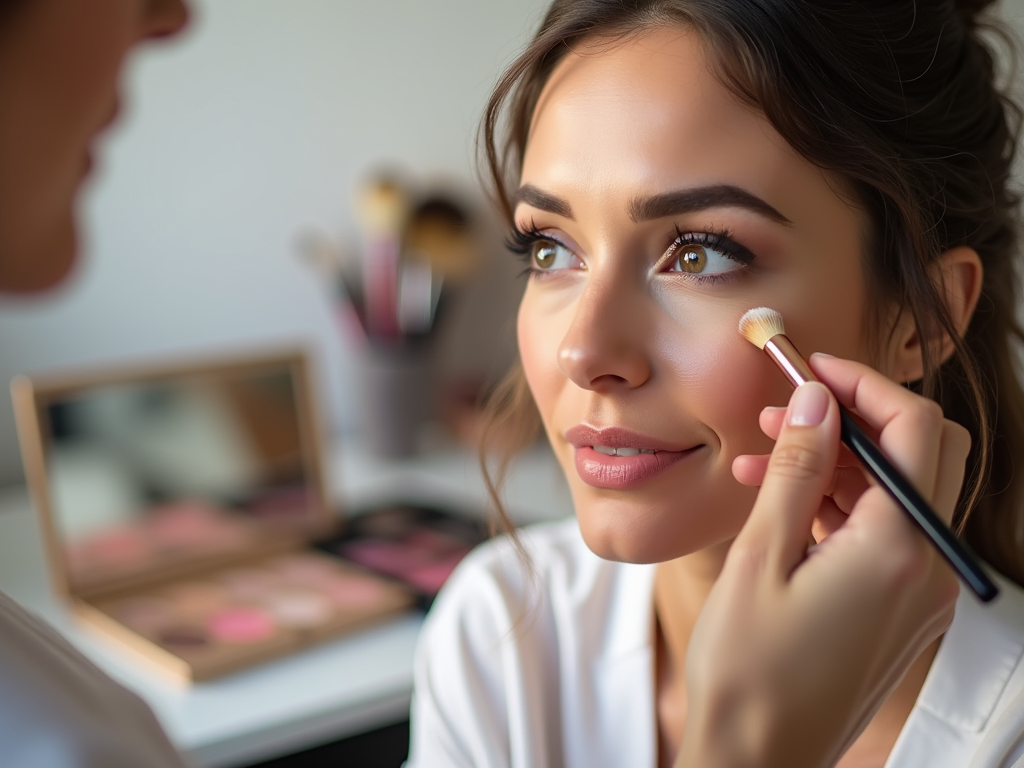Applying makeup in the correct order is crucial for achieving a flawless look that lasts throughout the day. The general rule is to start with lighter products and build up to heavier ones. This technique ensures better blending and longevity of your makeup. Understanding the correct sequence can enhance the effectiveness of each product and maintain your skin’s health. Below, we’ll break down the step-by-step process to ensure you look your best every time you apply makeup.
Step 1: Begin with Skincare

Before diving into makeup, proper skincare is a prerequisite for achieving a smooth canvas. Always start with a clean face. Use a suitable cleanser for your skin type, followed by a toner to balance your skin’s pH. Make sure to moisturize well, as hydrated skin helps makeup glide on smoothly. Depending on your needs, applying a sunscreen can also be an essential step. Lastly, if needed, apply a primer to minimize pores and prolong the wear of the makeup.
Step 2: Foundation

Once your skincare is set, the next step is applying foundation. This product helps to even out your skin tone and create a base for the rest of your makeup. Choose a foundation that matches your skin tone and type—liquid, cream, or powder. You can apply it with a brush, sponge, or fingertips, ensuring to blend it into your skin seamlessly. Don’t forget to extend it down to your neck for a uniform look. Foundation acts as a canvas over which you’ll layer the rest of your makeup products.
Step 3: Concealer
Concealer is your ally for covering imperfections and brightening your under-eye area. After applying foundation, use a creamy concealer that’s a shade lighter than your skin tone. This not only helps in camouflaging blemishes but also brightens the eyes. Dab it on the spots you wish to conceal with either your fingertip or a small brush for precision. Blend it gently to avoid harsh lines. Here are the typical areas to apply concealer:
- Under the eyes to reduce dark circles
- On blemishes or redness
- On areas that need extra coverage
Step 4: Set with Powder
To lock everything in place, applying setting powder is essential. Use a light, translucent powder to avoid adding extra color or weight. With a fluffy brush, lightly dust it over your face, focusing especially on areas that tend to get oily. Setting powder not only controls shine but also helps in blurring imperfections. For those with dry skin, only apply it to the T-zone or areas prone to oiliness. This step ensures that your foundation and concealer stay intact for hours.
Step 5: Enhance with Color and Define
Now it’s time to add color to your face, typically starting with blush and bronzer. Apply bronzer to the hollows of your cheeks, temples, and jawline for a sculpted look. Then, dab some blush on the apples of your cheeks for a healthy glow. Afterward, you can move onto the eyes with eyeshadow, eyeliner, and mascara to define your gaze. Finish off with lipstick or lip gloss for a pop of color. A quick summary of the defining steps:
- Apply bronzer
- Add blush
- Define eyes with eyeshadow
- Apply eyeliner
- Finish with mascara
Conclusion
Following the correct order to apply makeup can significantly enhance your overall appearance and boost your confidence. By starting with a clean and moisturized face, layering products appropriately, and using the right techniques, you can achieve a professional-looking makeup application at home. Remember, practice makes perfect, so don’t hesitate to experiment with different products to find what works best for your unique features. Embrace your beauty routine confidently and enjoy the transformative power of makeup.
Frequently Asked Questions
1. Can I skip the primer?
While it’s not mandatory, primer creates a smoother surface and enhances the longevity of your makeup. It’s especially useful for those with larger pores or uneven texture.
2. How do I choose the right foundation shade?
Test the foundation on your jawline in natural light to find a shade that seamlessly blends into your skin tone. If you have undertones, match accordingly—cool, warm, or neutral.
3. What type of makeup is best for oily skin?
Opt for matte foundations, setting powders, and oil-free products to control shine. Additionally, oil-absorbing sheets can be an excellent tool for touch-ups throughout the day.
4. How can I make my makeup last longer?
Besides using a primer and setting powder, consider setting sprays, which help to lock in your makeup for extended wear. Avoid touching your face and carry a few touch-up products for longer days.
5. Is it necessary to use a separate concealer?
Using a separate concealer is not strictly necessary, as some foundations offer good coverage. However, a specialized concealer can provide a more targeted solution for blemishes and the under-eye area.


